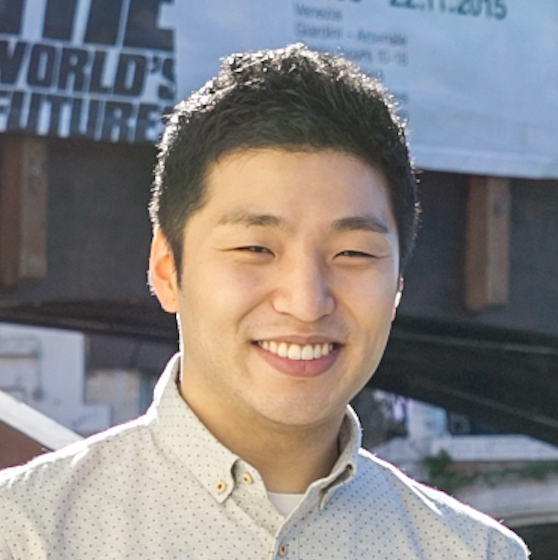Journal
- [J3] S. Choi, J. Jung, A. B. Kahng, Minsoo Kim, C.-H. Park, B. Pramanik and D. Yoon, "PROBE3.0: A Systematic Framework for Design-Technology Pathfinding with Improved Design Enablement", IEEE Transactions on Computer-Aided Design of Integrated Circuits and Systems 43(4) (2024), pp. 1218-1231. (Paper)
- [J2] A. B. Kahng, Minsoo Kim, S. Kim and M. Woo, "RosettaStone: Connecting the Past, Present and Future of Physical Design Research", IEEE Design & Test 39(5) (2022), pp. 70-78. (Paper)
- [J1] C.-K. Cheng, A. B. Kahng, H. Kim, Minsoo Kim, D. Lee, D. Park and M. Woo, "PROBE2.0: A Systematic Framework for Routability Assessment from Technology to Design in Advanced Nodes", IEEE Transactions on Computer-Aided Design of Integrated Circuits and Systems 41(5) (2022), pp. 1495-1508. (Paper)
Conference
- [C12] C.-T. Ho, A. Chandra, D. Guan, A. Ho, Minsoo Kim, Y. Li and H. Ren, "Novel Transformer Model Based Clustering Method for Standard Cell Design Automation", Proc. ACM International Symposium on Physical Design, 2024, pp. 195-203. (Best Paper Awards) (Paper)
- [C11] C.-T. Ho, A. Ho, M. Fojtik, Minsoo Kim, S. Wei, Y. Li, B. Khailany and H. Ren, "NVCell 2: Routability-Driven Standard Cell Layout in Advanced Nodes with Lattice Graph Routability Model", Proc. ACM International Symposium on Physical Design, 2023, pp. 44-52. (Paper)
- [C10] C.-K. Cheng, A. B. Kahng, I. Kang, Minsoo Kim, D. Lee, B. Lin, D. Park and M. Woo, "CoRe-ECO: Concurrent Refinement of Detailed Place-and-Route for an Efficient ECO Automation", Proc. IEEE International Conference on Computer Design, 2021, pp. 366-373. (Paper) (Slides) (Video)
- [C9] C. Chidambaram, A. B. Kahng, Minsoo Kim, G. Nallapati, S. C. Song and M. Woo, "A Novel Framework for DTCO: Fast and Automatic Routability Assessment with Machine Learning for Sub-3nm Technology Options", Proc. IEEE Symposium on VLSI Technology, 2021, pp. 1-2. (Paper) (Slides) (Video)
- [C8] H. Fatemi, A. B. Kahng, Minsoo Kim and J. Pineda de Gyvez, "Optimal Bounded-Skew Steiner Trees to Minimize Maximum k-Active Dynamic Power", Proc. ACM/IEEE International Workshop on System-Level Interconnect Problems and Pathfinding, 2020, pp. 1-8. (Paper) (Slides)
- [C7] A. Rovinski, T. Ajayi, Minsoo Kim, G. Wang and M. Saligane, "Bridging Academic Open-Source EDA to Real World Usability", Proc. ACM/IEEE International Conference on Computer-Aided Design, 2020, pp. 1-7. (Paper) (Slides) (Video)
- [C6] V. A. Chhabria, A. B. Kahng, Minsoo Kim, U. Mallappa, S. S. Sapatnekar and B. Xu, "Template-based PDN Synthesis in Floorplan and Placement Using Classifier and CNN Techniques", Proc. ACM/IEEE Asia and South Pacific Design Automation Conference, 2020, pp. 44-49. (Paper) (Slides)
- [C5] T. Ajayi, V. A. Chhabria, M. Fogaça, S. Hashemi, A. Hosny, A. B. Kahng, Minsoo Kim, J. Lee, U. Mallappa, M. Neseem, G. Pradipta, S. Reda, M. Saligane, S. S. Sapatnekar, C. Sechen, M. Shalan, W. Swartz, L. Wang, Z. Wang, M. Woo and B. Xu, "Toward an Open-Source Digital Flow: First Learnings from the OpenROAD Project", Proc. ACM/IEEE Design Automation Conference, 2019, pp. 76:1-76:4. (Paper) (Slides)
- [C4] T. Ajayi, D. Blaauw, T.-B. Chan, C.-K. Cheng, V. A. Chhabria, D. K. Choo, M. Coltella, S. Dobre, R. Dreslinski, M. Fogaça, S. Hashemi, A. Hosny, A. B. Kahng, Minsoo Kim, J. Li, Z. Liang, U. Mallappa, P. Penzes, G. Pradipta, S. Reda, A. Rovinski, K. Samadi, S. S. Sapatnekar, L. Saul, C. Sechen, V. Srinivas, W. Swartz, D. Sylvester, D. Urquhart, L. Wang, M. Woo and B. Xu, "OpenROAD: Toward a Self- Driving, Open-Source Digital Layout Implementation Tool Chain", Proc. Government Microcircuit Applications and Critical Technology Conference, 2019, pp. 1105-1110. (Paper) (Slides)
- [C3] S. Heo, A. B. Kahng, Minsoo Kim, L. Wang and C. Yang, "Detailed Placement for IR Drop Mitigation by Power Staple Insertion in Sub-10nm VLSI", Proc. ACM/IEEE Design, Automation and Test in Europe, 2019, pp. 824-829. (Paper) (Slides)
- [C2] S. Heo, A. B. Kahng, Minsoo Kim and L. Wang, "Diffusion Break-Aware Leakage Power Optimization and Detailed Placement in Sub-10nm VLSI", Proc. ACM/IEEE Asia and South Pacific Design Automation Conference, 2019, pp. 550-556. (nominated for Best Paper Awards) (Paper) (Slides)
- [C1] Minsoo Kim, C.-M. Kyung and K. Yi, "An Energy Management Scheme for Solar-Powered Wireless Visual Sensor Networks Toward Uninterrupted Operations", Proc. IEEE International SoC Design Conference, 2013, pp. 23-26. (Paper)

